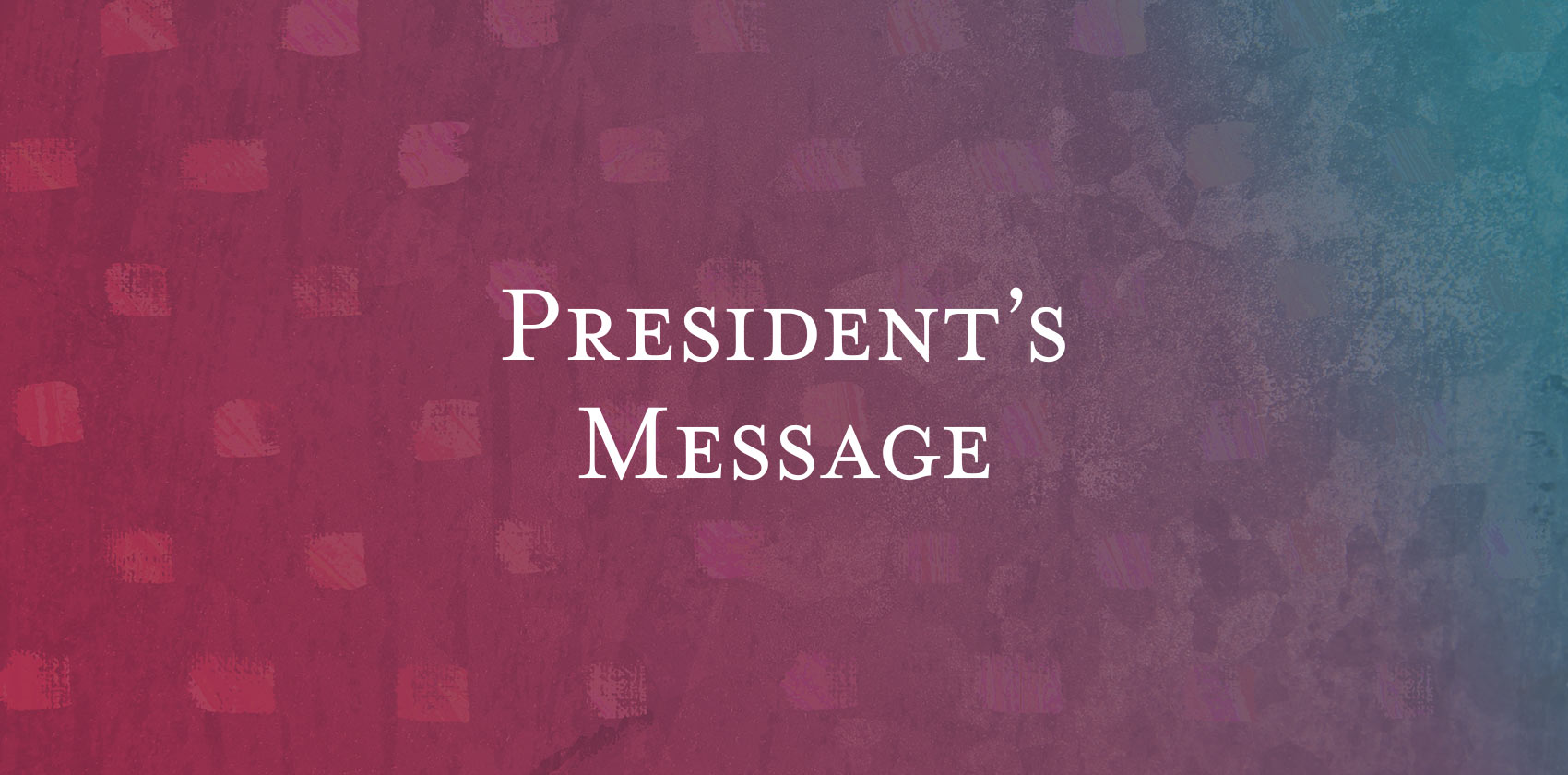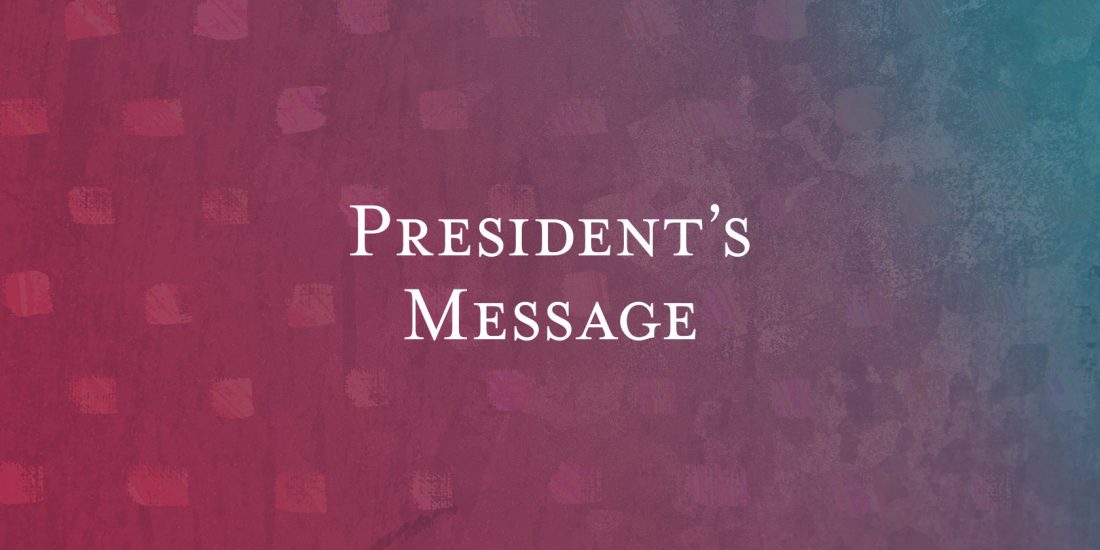
President’s Message
Closing Remarks in Family Conference 2020 (15 September 2020)
Good Evening, Honoured Guests and Distinguished Delegates of the Family Conference 2020, Ladies and Gentlemen,
It is my privilege to deliver the closing remarks in Family Conference 2020 – Supporting, Healing, Reconstructing – The New Landscape this evening. What a unique webinar experience it has been for all of us (despite tech glitches). From the inaugural CJ Koh Family Law Lecture and two days of power packed content unpacking various concepts such as Singapore family law’s unique power of matrimonial asset division, multiplicity of proceedings in family and probate matters, expanding the definition of the “guardian” of a child, recognition and enforcement of foreign matrimonial financial relief judgments, therapeutic justice (more on this in a moment), international perspectives on TJ and capacity building, jurisdictional aspects of the Syariah Court and Family Justice Court and just now, determining the “best interests” of a child. And our master class instructors, the Chief Justice, PJ FJC and honoured judges, the brightest and the best of the local Family Bar, a stellar cast of international legal luminaries many drawn from the International Association of Matrimonial Lawyers as well as leading local academics.
This two-day conference for the third successive year is an exemplar of multi-committee collaboration in Law Soc (not collaborative law) between the Family Law Practice Committee, Probate Practice Committee and the Muslim Law Practice Committee. Kudos to Kai Yun, Lay Lian, Kok Yeow, Ahmad Nizam and their respective committed committees who have given sterling, dedicated service to pull this event off.
In these closing remarks, I will touch on what has become quite a buzz word among the family law practitioners and this conference. Therapeutic Justice or TJ.
Let me share three broad mini perspectives. First, a practitioner survey, Second, a practical perspective and last, a psychological point on the continuing discourse of lawyers as healers.
The starting point is VDZ v VEA [2020] SGCA 75, the Court of Appeal amplified the meaning of Therapeutic Justice at [75]:
“The family justice system is one that … is intended to aid the parties (and their children) to achieve as much healing in all its variegated aspects as is possible in order that they move forward as positively as possible with their lives. This is the essence of …’Therapeutic Justice’. Put simply, it is a non-adversarial system that is ‘problem-solving’. It is a process which is such that ‘the entire journey should allow the healing, restoring and recasting of a positive future. It should allow parties time to grieve over the loss of the marriage and be supported through this’ …
(at [77]) Therapeutic Justice (TJ) is not merely an ideal; it is a necessity. It is not merely theoretical but is intensely practical. It is axiomatic that relationships constitute the very pith and marrow of a family … When familial relationships break down, … healing needs to take place.”
The question is what does TJ look like? Veteran family law practitioner Ellen Lee shared some of the findings of our Law Soc survey with the Family Bar comprising:
- 115 members consulted over three Virtual Huddles (of about an hour each).
- 44 members of the Family Bar separately completing the survey.
As a recap, this is what a majority of the respondents to the FLPC Survey thought TJ meant:
- Reducing (not adding to) the acrimony between the parties (93.18%)
- Ensuring a child’s interest is paramount (79.55%)
- Empowering families to come to an amicable agreement without litigation (79.55%)
- Embracing a new way of problem solving by adopting a multi-disciplinary approach (i.e. by working with psychologists and counsellors) (70.45%)
- Healing and restoration to enable the family to move on (63.64%)
So, there is a need for clarity of concept of what TJ means and what it does not mean. This Conference, including the perspectives of CJ and PJFC, has been invaluable in illuminating it.
What was heartening to note is that 90% or more of the respondents believed that they are currently practising TJ.
Many practitioners have shared their view that there is a lack of clarity as to the role of lawyers in pre-writ and post-writ stage.
The general consensus is that it is not in the interests of justice for lawyers to have a diminished role in the family law landscape. That could lead to three unwanted knock-on effects. First, a reduced access to justice for litigants. Second, insufficient development of jurisprudence on family law. Third, an over-reliance on non-legally trained professionals for resolution without a holistic consideration of issues surrounding marriage and parties’ legal rights.
The last point in particular merits elaboration. Respondents were concerned that parties would enter into agreements without fully understanding their rights. During the Virtual Huddle on 7 August 2020, one of the greatest concerns shared was of litigants being ill-informed of their rights and position, and its ramifications if not caught early on during the pre-writ or post-writ. A moment’s reflection for each of us will show how easily mistakes, misunderstandings and misperceptions on the part of a litigant could lead to resolutions that could be unravelled via setting aside applications for consent orders, variations, etc. As the old saying goes “A little knowledge is a dangerous thing”. So, the lawyers do need to be in the picture.
And so among the areas or avenues of involvement of the family law practitioners mooted are:
- More extensive opportunities in acting as mediation advocates during the pre-writ/post-writ process;
- More extensive opportunities in acting as mediators during pre-writ process and the current court processes, i.e. at the Maintenance Mediation Chambers or CFRC;
- Opportunities in being involved in the “triage” of cases pre-writ (if such a role is available for practitioners).
I invite our stakeholders to consider the mediation/conciliation roles that lawyers can play in these upstream aspects of familial support, healing and reconstructing.
That leads me to my second point, a practical one. For the family practitioners, bearing in mind 90% or more have internalized the thinking behind TJ, a practical point relates to externalizing that thinking into letter writing to our learned friends. As we help parties grieve over the loss of their marriage and children navigate their way through the brokenness of a family, in a practical way, the 90% need to ask ourselves whether the choice of tone and words used contribute to the healing or the hurting of the individuals involved. The simple question is: will this letter heal or hurt? Sometimes, a reflective look at our letter once drafted before finalizing could be an intentional way to incorporate the discipline.
We already know that the family members (including divorce couples) will experience grief (in all its five stages as the Kubler-Ross model postulates – denial, anger, bargaining, depression and acceptance) of losing what was once a cherished institution to them. But the question is even with this natural grief that individuals experience, and they may be at different stages, will this family come out of this court case worse for the wear because of that letter authored? It is tough because we are under client pressure, we do not want to appear weak relative to the counterparty’s lawyer, we want to do our best by our client. But the incendiary and inflammatory could stoke the fire that burns and scars the individuals for life. And If we received such letters, do we need to retaliate or can we help defuse and de-escalate. To speak our mind but mind our speech. Some of the finest examples of letter writing, anonymized appropriately of course, could be useful illustrations for the Family Bar leaders to share with the Bar, in inner, close door huddles as the know-how, to transmit TJ especially for our younger practitioners who are the next generation. And what an impact that will be.
Finally, the psychological point. Nearly three years ago, I shared a paradigm shifting concept during the Family Justice Practice Forum conference and developed it more fully in the Singapore Law Gazette on the concept of the Lawyer as Healer. In expounding the concept, I quoted from the Honourable the Chief Justice Sundaresh Menon’s speech who emphasized the role of the family lawyer as peacemaker in his Keynote Address during the Family Justice Practice Forum that year:
“10. Around the world, there has been growing awareness for some time that lawyering in family work should emphasize the important role of lawyers as problem solvers, working collaboratively in a multidisciplinary environment, with the objective of achieving outcomes that are beneficial to all those involved in or affected by the dispute.
11. In line with this, Professor John Lande has observed that in America, despite the public image of family lawyers as fomenters of conflict, the empirical research indicates that most family lawyers in fact endeavour to be reasonable. They dampen legal conflict far more than they exacerbate it and generally try to avoid adversarial action. Increasingly, they have looked beyond the traditional paradigm to embrace interest-based negotiation and creative problem-solving approaches that focus on the true interests of the affected clients and families. Other family lawyers envision the role of the family lawyer as a “peacemaker” believing that what they do, day after day, is to be “present” for their clients and to work for peace for them and their families.”
The idea of the lawyer as healer is less radical now, especially given TJ. I respectfully submit that TJ embeds the underlying philosophy of the Lawyer as Healer.
I seeded a second idea during the Family Conference the next year. We are not the only healers. Collaborating with social workers, counsellors, etc, we are part of a community of healers. Time will fail me even on this occasion to fully develop this second idea.
But as I draw my remarks to a close, I want to share a third idea, to sustain healing, supporting and reconstructing as lawyers who are healers, guard your compassion from loss or fatigue. Three tips for now. First, take time out to ensure that you are looking after your own wellness or well-being. Second, ensure that you are sufficiently, regularly rested and recharged. And last, draw healthy boundaries between work and other parts of your life.
The Family Bar is one of the greatest, if not the greatest, fonts of empathy in the legal profession. It is not the only one. If you read the judgment of Parti Liyani, there is a powerful moment in that judgment (which is now a cause celebre) showcasing empathy. Justice Chan Seng Onn observed at [195]:
“In assessing Parti’s defence, I must have regard to her state of mind, her emotions at that time, the stress she faced given the suddenness of her termination, the limited time to pack and the immediate repatriation to Indonesia within two hours of being notified.”
A veteran judge in our Supreme Court did not lose his empathy or compassion. That is our gold standard.
I now invite the organising committee of this landmark, unique and historic conference to join me online.
Gregory Vijayendran, SC
Partner, Dispute Resolution
Rajah & Tann Singapore LLP
Immediate Past President
The Law Society of Singapore
Partner, Dispute Resolution
Rajah & Tann Singapore LLP
Immediate Past President
The Law Society of Singapore




